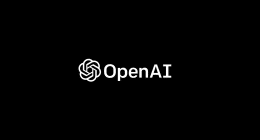And while we just reported how it took Lollipop almost an year and a half to get to the No.1 spot on adoption stats (marshmallow not even in picture as of now), Google has dropped a surprise — developer preview of the Android N.
Why surprise ? Because google was expected to reveal the same in I/O conference May this year.
There’s another small surprise with this one. Google’s SVP for Android, Chrome OS and Chromecast, Hiroshi Lockheimer took to Medium and not the usual Blogspot stuff to announce this preview.
Enough of surprises, Now lets get to business.
In his Medium post, Lockheimer says that his team decided to release it earlier this time, largely to gain more feedback before launching a less bug version in the I/O this May, He goes on to say,
By releasing the first preview and asking for your feedback now (in March!), we’ll be able to act on that feedback while still being able to hand off the final N release to device makers this summer, so they can get their hands on the latest version of Android earlier than ever. Plus, you’ll be able to use this additional time to support all of the new goodies in N in your apps.
That could well be a good enough strategy in a bid to build more hype for Android N and make devs ready even before launching an actual preview. This could also help in Google’s ever painful trend of its latest Android versions unable to gain mass adoption just a few months after launch. Contrary to that, iOS versions are usually updated almost three-four months after a public release, on almost every device.
While this obviously is a work in progress, there a few features which Google has laid down for us to have a look at (and for developers to have a go at). Rest assured though, you might see fresh new additions to the same, even before that may launch.
The latest Android for example, has got native support for split-screen multitasking. While high-end Samsung device owners have obviously already experienced it due to the Touchwiz bloatware which the Korean giant provides, it is for the first time that Android is getting a native (and very much welcome) support for the same.
Handheld devices running Android N offer split-screen mode. In this mode, the system fills the screen with two apps, showing them either side-by-side or one-above-the-other. The user can drag the dividing line separating the two to make one app larger and the other smaller. As for other device specific details, you can go right here.
Next up is a new, innovative way to replace those boring old style of notifications. On its developer center, Google describes this new system by saying,
Android N introduces several new APIs that allow apps to post notifications that are highly visible and interactive.
And it indeed is.
Android N extends the existing RemoteInput notification API to support inline replies on handsets. This feature allows users to quickly respond from the notification shade without visiting your app. Android N also allows developers to bundle similar notifications to appear as a single notification.
Another important and much needed fix required in Android was a means to tackle those memory/battery guzzling background operations. Well, Google says that the new Android N provides several restrictions for developers to play with, in order to make these operations less memory- and battery-intensive.
Remember Doze ? Well, Google launched Doze in Marshmallow to save battery when your device is stationary. In N, Doze additionally saves battery whenever the screen turns off. If you’ve already adapted your app for Doze, e.g. by using the GCM high priority message for urgent notifications, then you’re set.
Also, Google says that it is continuing to invest in Project Svelte, an effort to reduce the memory needs of Android so that it can run on a much broader range of devices, in N by making background work more efficient.
An interesting addition for developers in Android N, would be introduction of ICU4J Android Framework APIs. ICU4J is an open-source, widely used set of Java libraries providing Unicode and globalization support for software applications.
With Android N, developers can reduce their APK footprint by not compiling the ICU4J libraries into the APK; instead, they can simply call out to them in the framework. This happens largely because ICU4J APIs use localization data present on the device.
There are more improvements, all of which can be accessed right here.
So how to get your hands on the all new, freshly brewed Android N ? Well, of you are fine with your phone breaking down in the middle from nowhere (bugs!), you can simply sign up for the developer preview right here.
Hiroshi further says that Google is making it even easier to get your hands on these previews through a new program called the Android Beta Program. Starting later today, you can update your Android device [Nexus 6, Nexus 5X, Nexus 6P, Nexus Player, Nexus 9, and Pixel C devices] via an OTA, Not only this, Google will deliver the latest developer previews right to your phone.
If you have been superfast in reading this and have already downloaded the same, do let us know how the new update works, in the comments below. Cheers!
The Tech Portal is published by Blue Box Media Private Limited. Our investors have no influence over our reporting. Read our full Ownership and Funding Disclosure →









